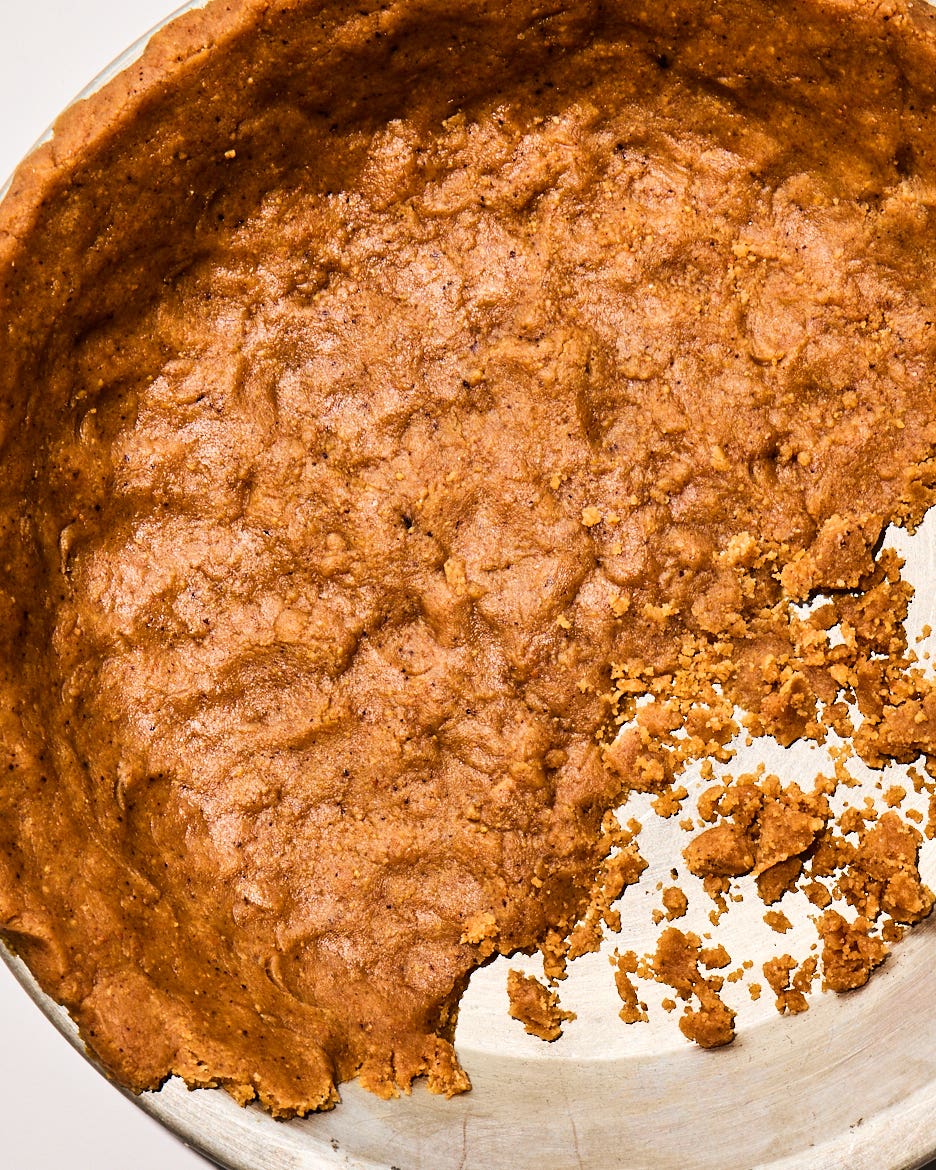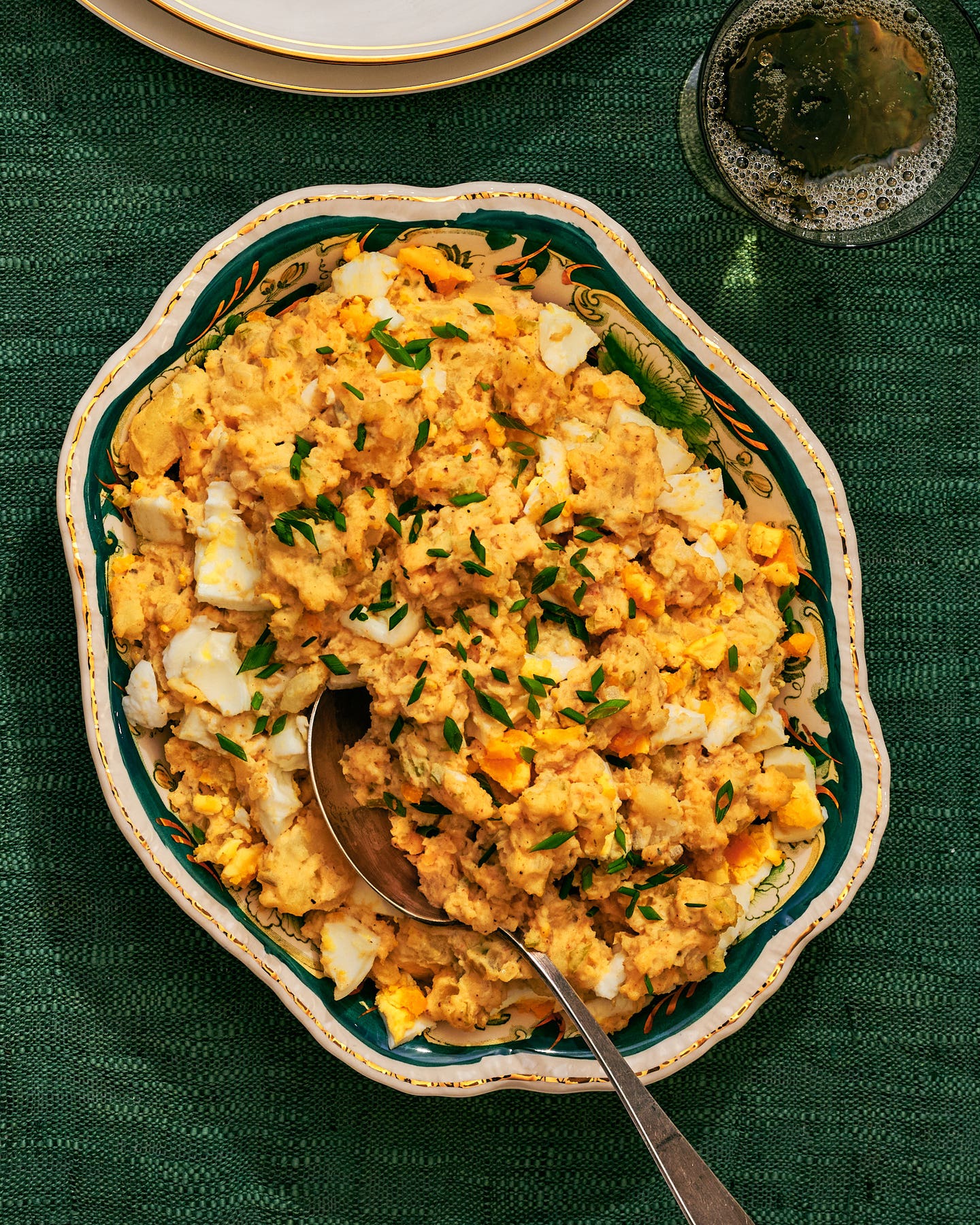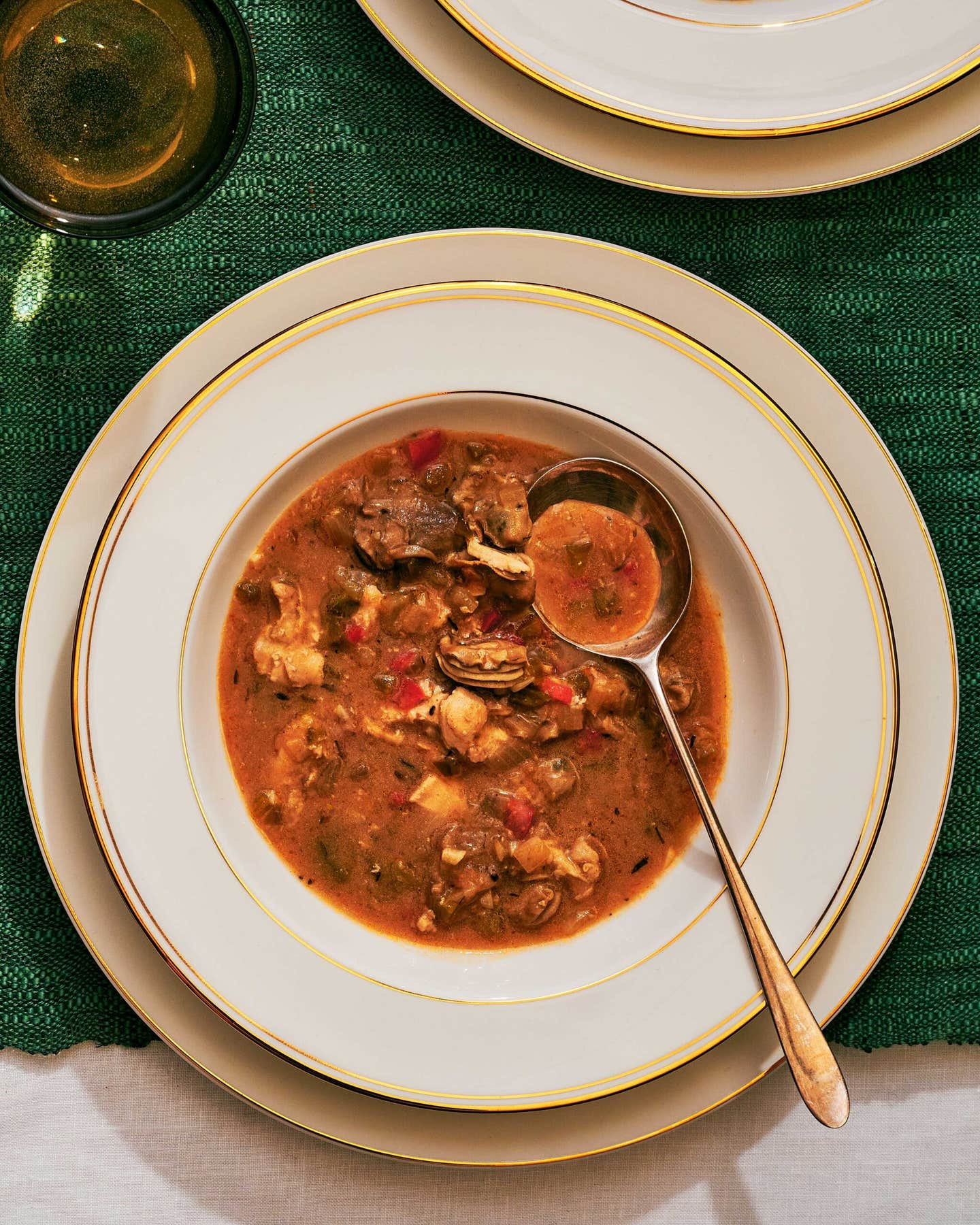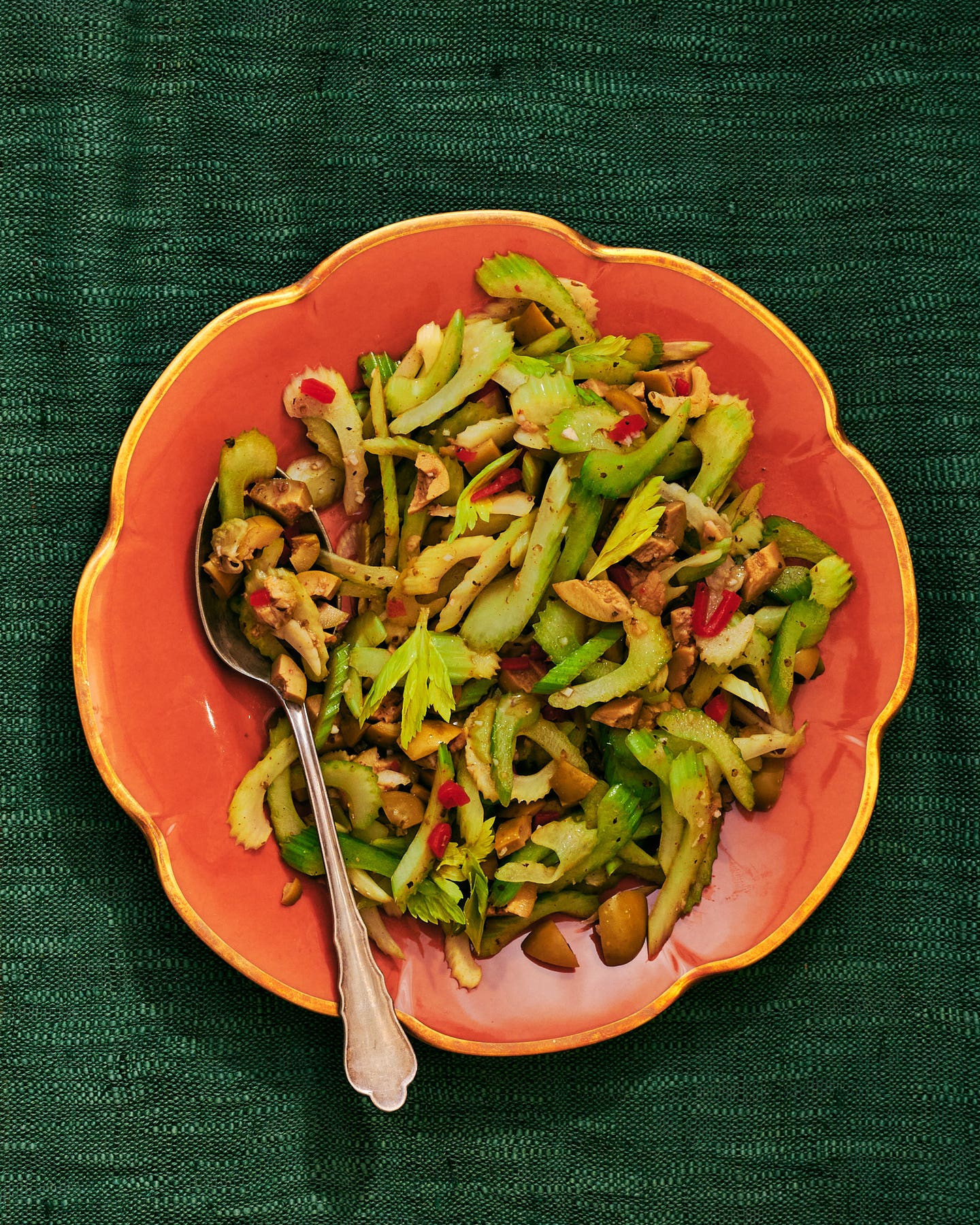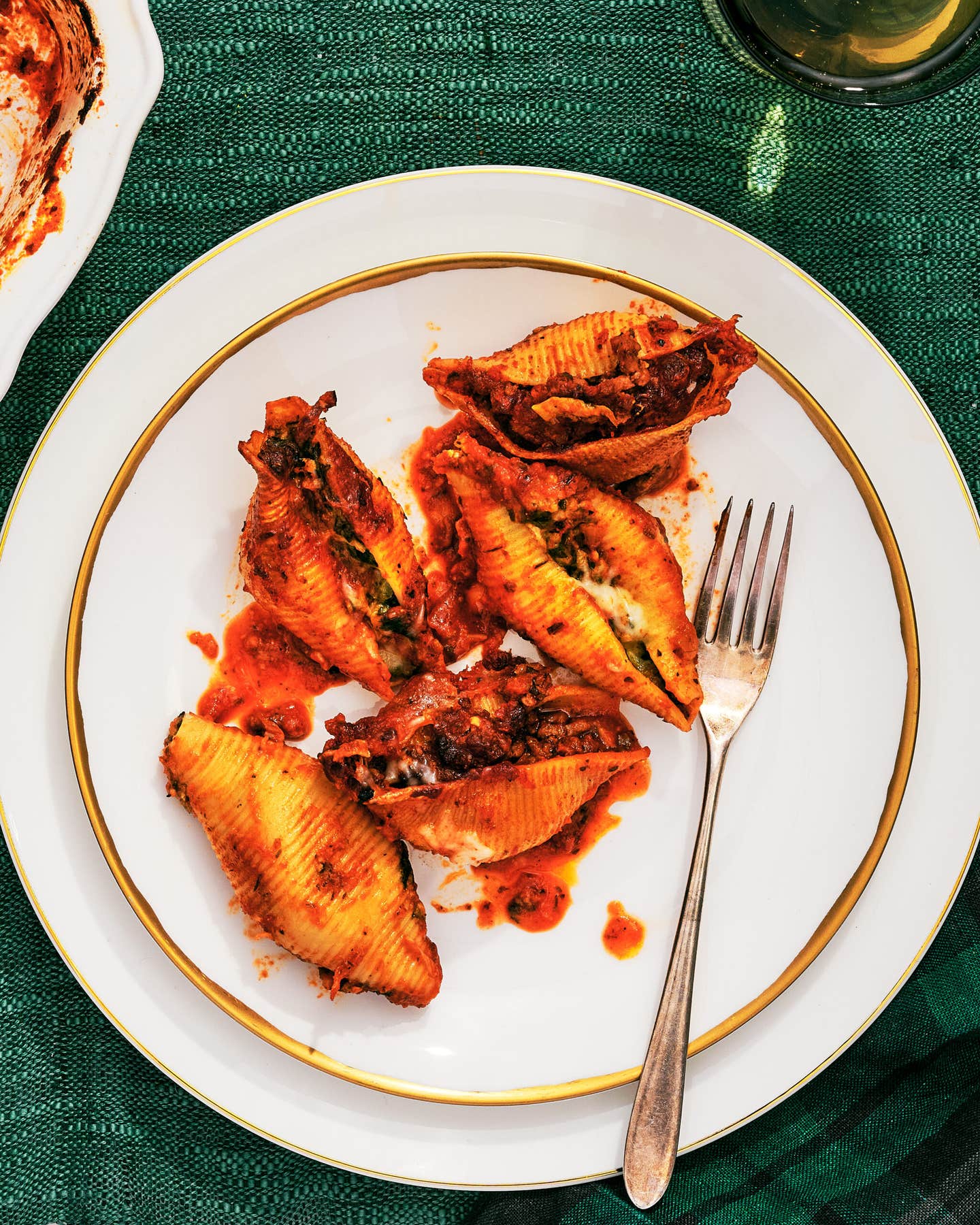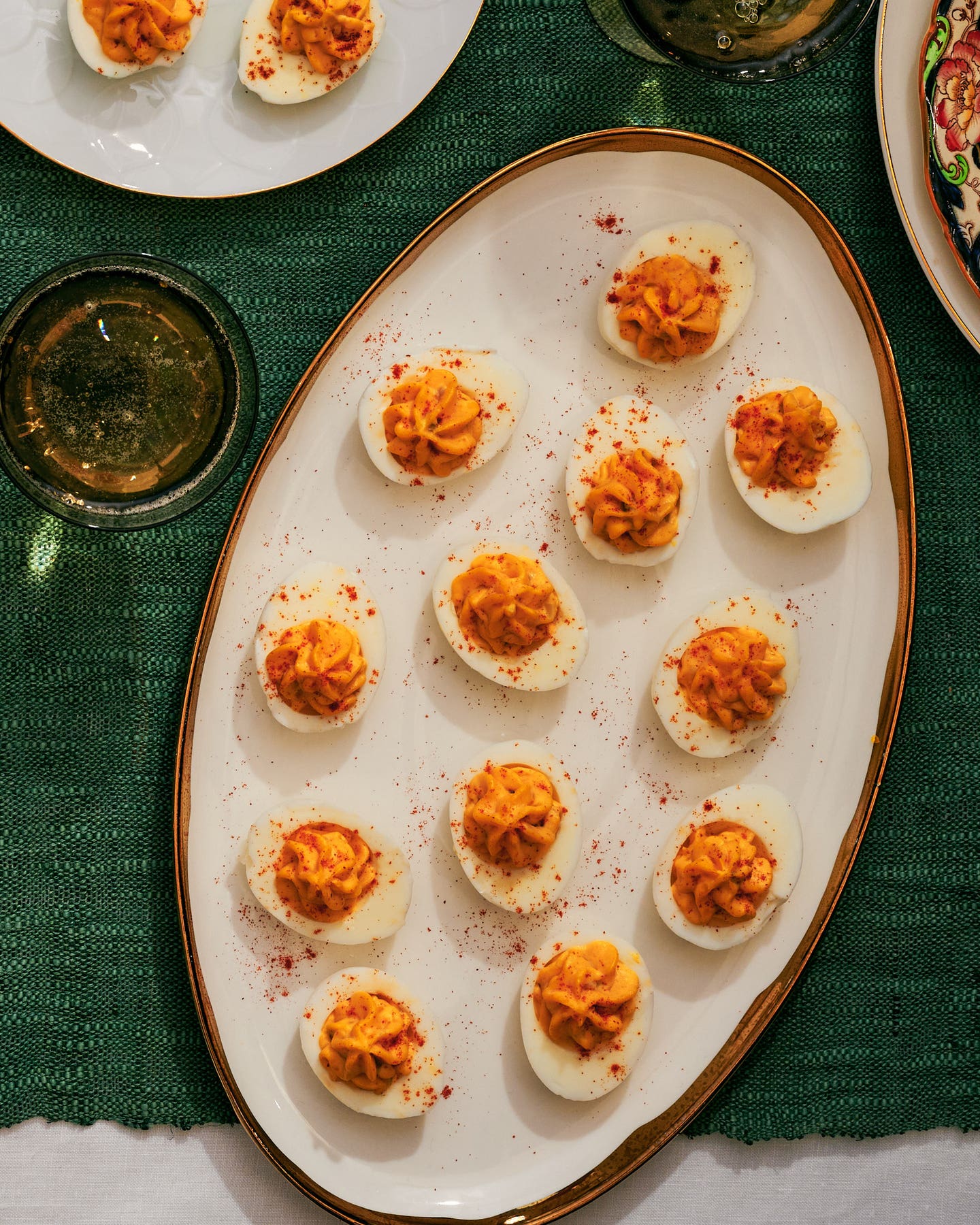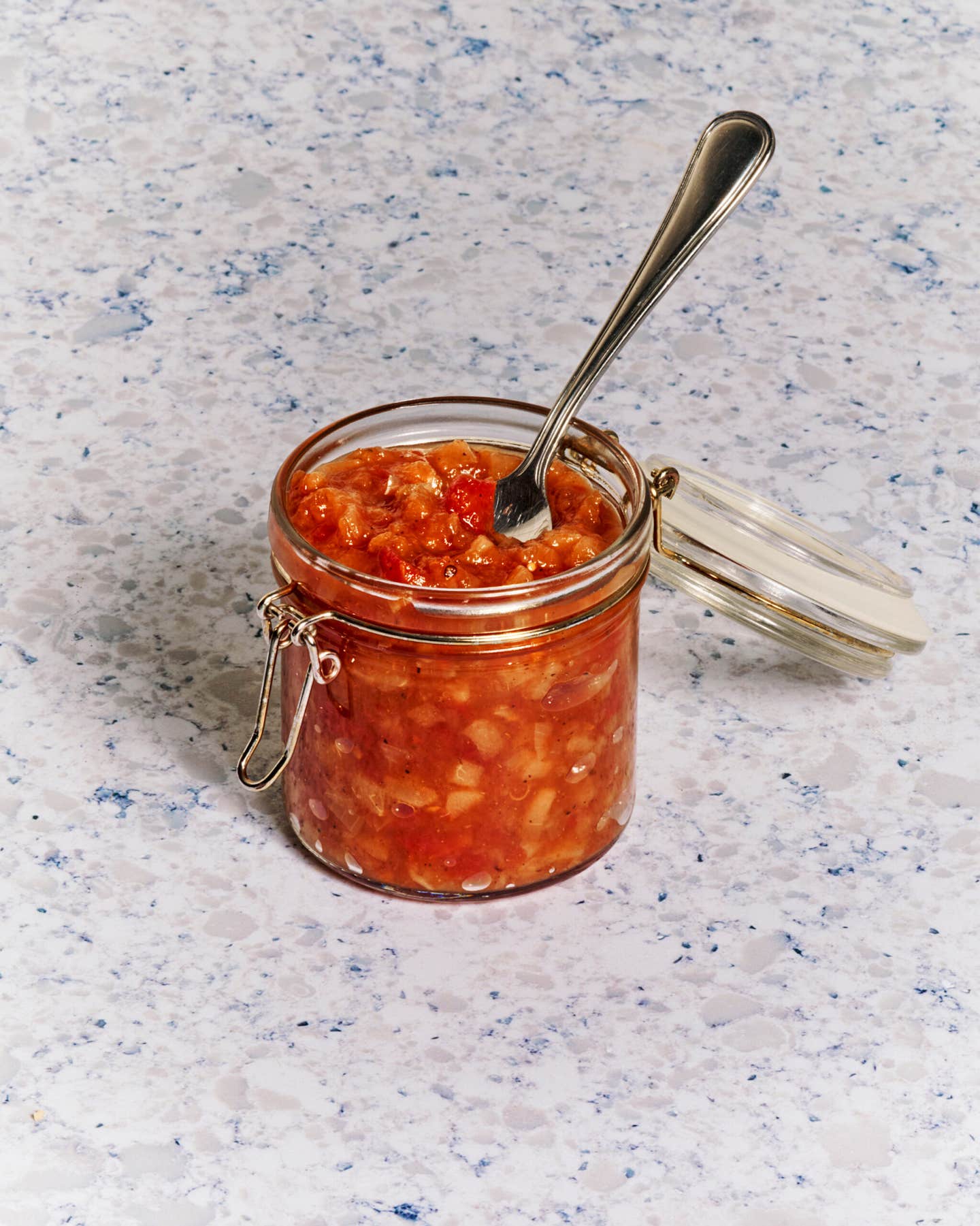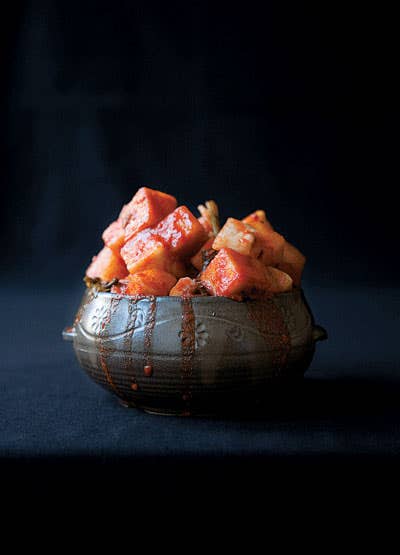
The Art of Kimchi
The distinctive taste of kimchi is familiar to anyone who has tried Korean food: the crunchy and cool cabbage leaves or chunks of daikon; the chile paste that burns the tongue; the pungent aroma, redolent of garlic and ginger and touched with a hint of the sea. In Korea, that spicy, earthy-tasting dish of fermented vegetables is on the table for breakfast, lunch, and dinner and everything in between. I cannot think of a single food from any other country that is half as important to a nation's culinary traditions as kimchi is to Korea's. I have been to French restaurants where there has been no bread basket; I have been to Chinese restaurants where you have to ask for rice; I have eaten Italian dinners that didn't include pasta. But it would be unheard of to sit down to a meal in a Korean home or restaurant and not be served kimchi.
November in Korea is the season for making paechu kimchi, or cabbage kimchi, arguably the most popular kind: the glossy, dark red tangle of brined cabbage leaves that have been rubbed with a paste of ground chiles, garlic, minuscule salted shrimp (saeu chot), anchovy sauce (aek jeot), ginger, and scallions and aged in jars for days, weeks, months, or even years. The November cabbage harvest in North Korea and South Korea and the making of kimchi that follows is a yearly observance called kimjang. In these chilly days just before winter, the last of the season's bounty is preserved for use throughout the year. In alleyways, on busy boulevards, and along the sides of bridges in Korean cities, vendors hawk ten-foot-high piles of cabbages and giant bundles of scallions. Elderly ladies armed with shopping bags prod the produce, looking for the best specimens. They bargain for jugs of salted shrimp and bags of the dried chile powder (gochu garu) that will infuse their kimchis with its fiery essence as they age.
That period of aging is when these ingredients become kimchi: they are both salted or brined and then fermented, the vegetables' sugars converting into lactic and acetic acids and carbon dioxide. The longer the kimchi ferments, the stronger its aroma and flavor; stinky is a word we English-speaking kimchi lovers use for the most intense versions, and we say it with the same affection a cheese aficionado feels for a ripe Taleggio. If you can eat it and love it, you are part of the tribe.
Kimjang is a big deal in Korea, but paechu kimchi is just one of literally hundreds of kinds that can be made throughout the year. Other popular versions include those made with daikon, cucumber, oysters, and more. I have tasted subtly flavored kimchis made from mushrooms or burdock root, light and crunchy ones made with soybean sprouts, meaty ones made with tender chunks of pumpkin, and luxurious ones made with young octopus. Kimchi can be mild, like tongchimi, or water kimchi, a combination of ingredients like cabbage, Asian pear, pine nuts, whole chiles, and pomegranate seeds floating in a tangy brine. It can also be eaten before it is allowed to ferment, as with geotjeoli, or "salad," kimchi, which consists of raw leaves of cabbage dressed with kimchi fixings, a kind of coleslaw that heats the belly as it cools the throat. In all of these forms, kimchi is curiously refreshing, not just because of its heat, which shoots straight to the brain, but also because it effervesces on the tongue. Kimchi serves the same purpose in a Korean meal that palate cleansers serve in a Western one: when you are tired of eating, you take a bite of it, your eyes and mouth water, and you have the energy to begin eating again.
In South Korea, kimchi is practically a national obsession. There is a kimchi research institute, a kimchi museum, and government-sponsored kimchi festivals. Korean scientists have fed kimchi to mice and shot it into space with Korean astronauts. Cookbook writers, scientists, and housewives in Korea tout the beneficial effects of kimchi's lactic acids and fiber upon the digestive tract. In addition to being rich in vitamins B and C, kimchi has, according to more than one study I've read, even shown promise in preventing cancer. It is, apparently, a superfood.
When I first tried kimchi, I made the mistake of eating it like a condiment, in the same bite as a piece of barbecued meat, say, or a spoonful of egg custard, thinking that its hot flavors are meant to offset soft ones. My Korean-American friends soon corrected me, explaining that kimchi is most often treated like a small side salad—often as part of an array of side dishes, known collectively as panchan, served at Korean meals. It is also frequently used as an ingredient in other dishes. When I was in Seoul on a recent visit, I found kimchi stirred into homey stews, grilled with succulent meats on a skewer, wrapped into nori rolls, steamed with fish, and folded into pancakes. I ate it in kimchi jigae, a rich, hearty stew of pork belly, mushrooms, and tofu that is thick with pungent, long-aged kimchi. At a restaurant called Hwa Jeon Min, I had bossam, a popular meal of pork belly, raw oysters, and radish kimchi. At the night market in the Dongdaemun district, a grumpy man with a small food cart served me scrumptious dumplings filled with kimchi. And in the basement of a shopping mall, I came across a dish called budae jigae, a bubbling concoction of hot dogs, Spam, packaged ramen noodles, and cabbage kimchi. Invented during the Korean War, it is popular among hungover college students and, despite its odd combination of ingredients, very satisfying.
Kimchi grew out of a tradition of salted, preserved vegetables, known as ji, that originated in northern China, and it has been eaten in Korea since the 13th century. But the capsicums, or hot peppers, that give most of today's kimchi its color and kick were not introduced to the Korean peninsula until the 16th century. Like all salted, smoked, or cured food, kimchi was made to ensure that the year's harvest did not go to waste and that there was plenty to eat in winter. And though the food is now prepared for its own sake rather than as a means of survival, the custom of making kimchi that is observed in home kitchens across the Koreas anchors cooks in these age-old rituals of harvesting and preservation.
The observance of kimjang every November entails hard work. I had no idea how time-consuming the ritual can be until last fall, when I traveled to Seoul with an old friend, Jeong-eun Park. At the home of her mother, Yeong-ae Kim, kimjang lasted for several days. On the first morning, Yeong-ae, a petite, immaculately dressed woman of 60, woke up early, drove from her apartment in Seoul's Songpa-gu district to her family garden plot two hours outside of Seoul, and harvested cabbages through the early afternoon. On her way home, she stopped by a supermarket to buy her condiments—four bags full. Because the two dozen cabbages, each of them weighing more than five pounds, would not fit inside her three-bedroom flat, which she shares with two of her grown daughters, she stacked the vegetables in the foyer outside her front door. When she was ready to get started, she transferred some of the cabbages to the apartment's tiny entryway, where she had prepared washtubs filled with water and salt.
First, Yeong-ae split the cabbages in half by bringing the blade of a sharp knife down through each head. Next, in an impressive feat of strength, she wrenched them into quarters with her bare hands and then placed the quartered cabbages in the tubs to soak them overnight. Later, during the night, she would wake up four times to turn the cabbages over.
The next day, Yeong-ae showed no signs of the restless night she must have had. After breakfast, she, Jeong-eun, and I, as well as a sister-in-law of Yeong-ae's, sat down on the living-room floor, which we'd lined with newspapers. Before us were piles of scallions and Korean watercress, heads of garlic, bottles of anchovy sauce, big jars of salted shrimp, and plastic bags of Yeong-ae's homemade chile powder, ground from Korean red peppers that she'd grown in her garden plot and dried on the roof of her apartment building. Yeong-ae and her sister-in-law chopped the garlic and then carefully used their hands to mix the ingredients. Then we all began to rub the cabbage leaves with the pungent paste.
Finally, we piled the pieces of seasoned cabbage into plastic storage containers, which would sit out for a few days. Before they can be refrigerated, the ingredients must rest for a while at room temperature while they begin to ferment. In centuries past, kimchi was stored in earthenware jars buried underground; these days, such vessels have been replaced by Tupperware and refrigerators, usually special ones set aside just for the purpose. (Yeong-ae's kimchi fridge sits in her small hallway.)
At Yeong-ae's apartment, the mixing, seasoning, and storing continued into the afternoon, and as the day wore on, various female friends and relatives of Yeong-ae's arrived to help. To this day, kimchi making is women's work, and kimjang is a time to visit and catch up. It seemed to me something like a quilting bee: as they worked, the women laughed and gossiped: about the cousin who married the ugly girl, the neighbor who spent all her husband's money. They also occasionally paused to sample pieces of the seasoned cabbage. I did the same; it was crisp and tasted of the earth. This was the first time I'd tried unfermented kimchi, and even the cabbage itself was a revelation. Korean paechu is a close cousin of the varieties of Napa cabbage found in the United States, but it tastes very different. Unlike the Napa cabbage I was familiar with, which tends to be pale and pliant, practically apologetic on the tongue, the paechu was hearty. It tasted bright and cold and complicated. In fact, it tasted a little like autumn itself, that final burst of color and vitality before hibernation.
Across the provinces of both North Korea and South Korea, there are striking regional differences in the kimchis one eats in homes and restaurants. As a general rule, kimchi gets saltier and more pungent as you travel from north to south across the Korean peninsula. This makes sense, because in the north the climate is cooler, and it's therefore always been easier to preserve vegetables without heavily salting them and fermenting them for long periods.
On both countries' coasts, kimchi is often made with a mixture of vegetables and fresh seafood like oysters and pollack. Farther inland, in provinces with more farms, kimchis made from eggplant, spring onions, and sesame leaves are popular. In mountainous areas, like the inland parts of Kangwon-do Province, in the peninsula's center, cooks make use of ingredients that can be foraged from the forests, like acorns and arrowroot.
Of all these regional variations, the most renowned kimchis come from Korea's three traditional culinary capitals: Gaesong, in what is now North Korea; Jeonju, in the south; and Seoul, more or less right in the middle of the peninsula. Gaesong, which was for centuries the Korean capital, is famous for subtle, nuanced flavors and lightly braised meats and seafood; cooks there have long favored delicate water kimchis made from vegetables steeped in beef broth. Because it's nearly impossible to get into Communist North Korea these days, I've never been able to visit Gaesong, but I have had Gaesong-style food in Seoul. There, at the restaurant Gaesong House, I had a deliciously sophisticated kimchis made of octopus, pine nuts, and chiles wrapped in cabbage leaves.
Jeonju, on the other hand, is within South Korea, a four-hour drive from Seoul. Many chefs and restaurateurs in Korea claim a connection to Jeolla-do, the province of which Jeonju is the capital. The region is the birthplace of some of the most extravagant cuisine—and kimchi—in all Korea. The style of cooking there still bears the indelible stamp of the aristocratic Lee clan, which established itself there in 1392. In the city of Jeonju in particular, foods are more complex than anywhere else in the country, and meals are commonly accompanied by at least a dozen side dishes. The hot, vibrant kimchis of Jeolla-do feature ingredients ranging from plum juice and pears to chestnuts and sweet potatoes.
On a recent trip to Jeolla-do Province, I visited Bitgoeul Luchia Traditional Food, a kimchi factory owned by Eun-sook Kim, a 58-year-old grandmother and former housewife who makes what I'd been told is Korea's most exquisite packaged kimchi, in some 20 different varieties. What distinguishes Eun-sook's kimchi from other commercial kimchis is that she and the eight workers she employs, all women of about her age, mix the ingredients by hand.
There's a word in the Korean language, sonmat, that translates roughly as taste of hands; it denotes an elusive but essential element of the country's traditional foodways. For Koreans, eating and cooking are hands-on experiences, and real kimchi, Eun-sook told me, has qualities that can't be produced by machines or conferred by utensils. The kimchis Eun-sook invited me to taste, especially one made with mustard greens and a sour-spicy one made with tangerines and Chinese pepper, were indeed extraordinary. They more than lived up to the province's reputation for sumptuous and intensely flavorful food.
Another highlight of any trip to Jeolla-do is a visit to a restaurant in Jeonju called Gajok Hwaeguan. The chef and owner, a 72-year-old woman named Nyeon-yim Kim, is famous for her kimchi and for her version of bibimbap: stir-fried beef served in a hot stone bowl with rice, stir-fried zucchini, spinach, pickled burdock root, and bellflower stems and crowned with ribbons of julienned omelette. When I first walked into the place, I wasn't quite sure what to make of the fluorescent lit, cafeteria-like dining room packed with young couples, old people, children, and some monks from a nearby Buddhist monastery. But when the food arrived I immediately recognized the Jeonju-style excess I'd heard so much about. The banquet of side dishes that came with my bibimbap was jaw dropping: billowing clouds of egg custard, pickled raw beef with pears, seafood fritters, and a parade of remarkable kimchis. There was one tempered with slivers of sweet potato and chestnuts carved into tiny flower shapes. The starchy ingredients gave the kimchi a mellow, layered flavor that was miles away from that of the assertive versions I'd had before.
Cooks in Seoul, the last of Korea's three traditional culinary capitals and the center of commerce on the peninsula for centuries, have long benefited from a steady and terrifically varied supply of ingredients, most of which, at one point or another, have been made into kimchi. Still, I think my memories of the city will always be bound up in the flavor and fragrance of cabbage during the season of kimjang.
On the final day of kimchi making at Yeong-ae Kim's apartment in Seoul last autumn, Yeong-ae prepared lunch for me and her children. She brought out a few different kimchis she'd been keeping in the fridge. Last year's paechu kimchi, which she cut apart with scissors, had a robust flavor and a pleasantly crisp texture. But it was her two-year-old paechu kimchi, which she steamed along with mackerel for our lunch, that was the star. It was as rich, gamy, and funky as any I've tasted.
We also sampled some of the kimchi that Yeong-ae had made that morning. "There is nothing better than the taste of kimchi on the day it's made," Jeong-eun said, "because you can have it only once a year." Yeong-ae, who doesn't speak English, gestured for me to open my mouth. She picked up a sliver of the cabbage's heart between her fingers and popped it onto my tongue. It tasted of the Korean soil, was bracing, like the cold Korean air, and was even more delicious coming directly from a mother's hand.
Keep Reading
Continue to Next Story

